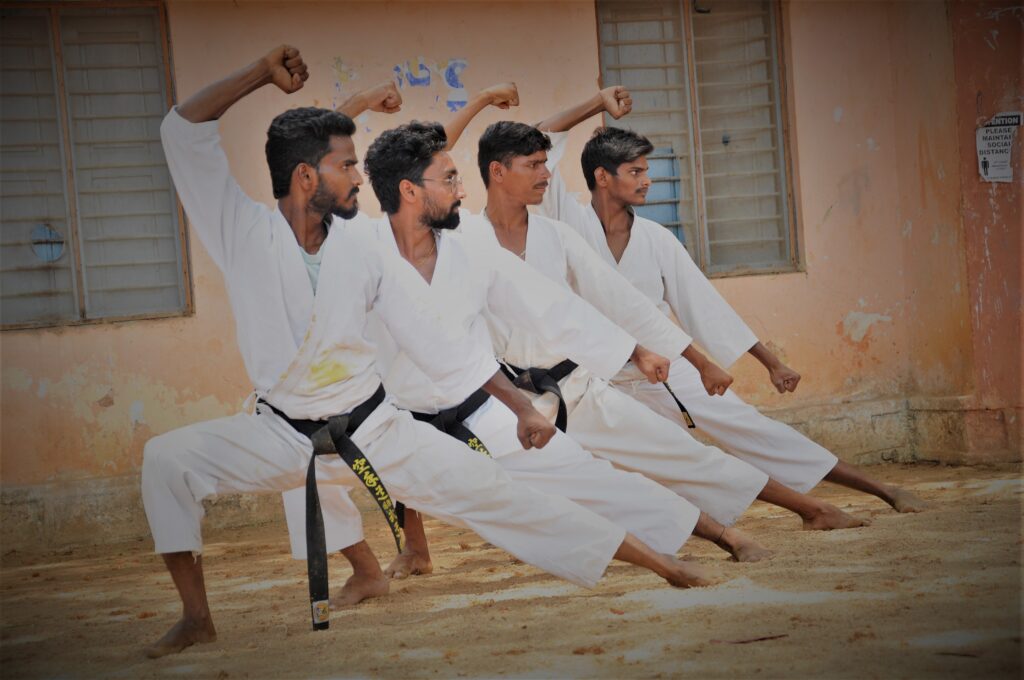Karate & Taekwondo

Karate is a Japanese martial art whose physical aspects seek the development of defensive and counterattacking body movements. The themes of traditional karate training are fighting and self-defense, though its mental and moral aspects target the overall improvement of the individual. This is facilitated by the discipline and persistent effort required in training. If karate had to be described in only one sentence, then the most suitable one may arguably be “You never attack first in karate.” This is a a maxim of Gichin Funakoshi (1868-1957), the Okinawan who brought karate to Japan in 1922, and who is accepted as the father of modern karate.
The word karate is a combination of two kanji (Chinese characters): kara, meaning empty, and te, meaning hand; thus, karate means “empty hand.” Adding the suffix “-dō” (pronounced “daw”), meaning “the way/path,” karate-dō, implies karate as a total way of life that goes well beyond the self-defense applications. In traditional karate-dō, one is supposed to compete and strive to excel against him/herself.
Today there are four main styles of karate in Japan: Shotokan, Goju-ryu, Shito-ryu, and Wado-ryu. Shotokan, though never described as a style by Gichin Funakoshi, it has been nevertheless considered as his. Actually Shotokan was the name of his dōjo, chosen after the pen name used by Funakoshi to sign poems written in his youth. Shotokan Karate is characterized by powerful linear techniques and deep strong stances. It is the style taught at the Tulane Karate Club
Taekwondo is a Korean martial art and Olympic combat sport that involves kicking, punching, and blocking:
Origin
Taekwondo originated in Korea during the Three-Kingdom era (c. 50 BC). The name comes from the Korean words tae (foot), kwon (fist), and do (the way or discipline).
Techniques
Taekwondo is known for its combination of kick movements, but also includes punching and blocking.
Training
Taekwondo training involves learning individual techniques and practicing them in sets called hyung. Students also practice sparring combinations and free sparring.
Competition
Taekwondo competitions are made up of three rounds of two minutes each, with a one-minute break between rounds. The winner is the competitor with the most points.
Styles
There are many styles of Taekwondo, including WT, ITF, ATA, and Traditional. These styles teach similar techniques, but differ in rules, forms, and emphasis.
Benefits
Taekwondo can help build strength and flexibility, and it also emphasizes mental discipline and sportsmanship.
Popularity
Taekwondo is practiced in over 200 countries and more than 60 million people practice it worldwide. It became an Olympic sport in 2000.
